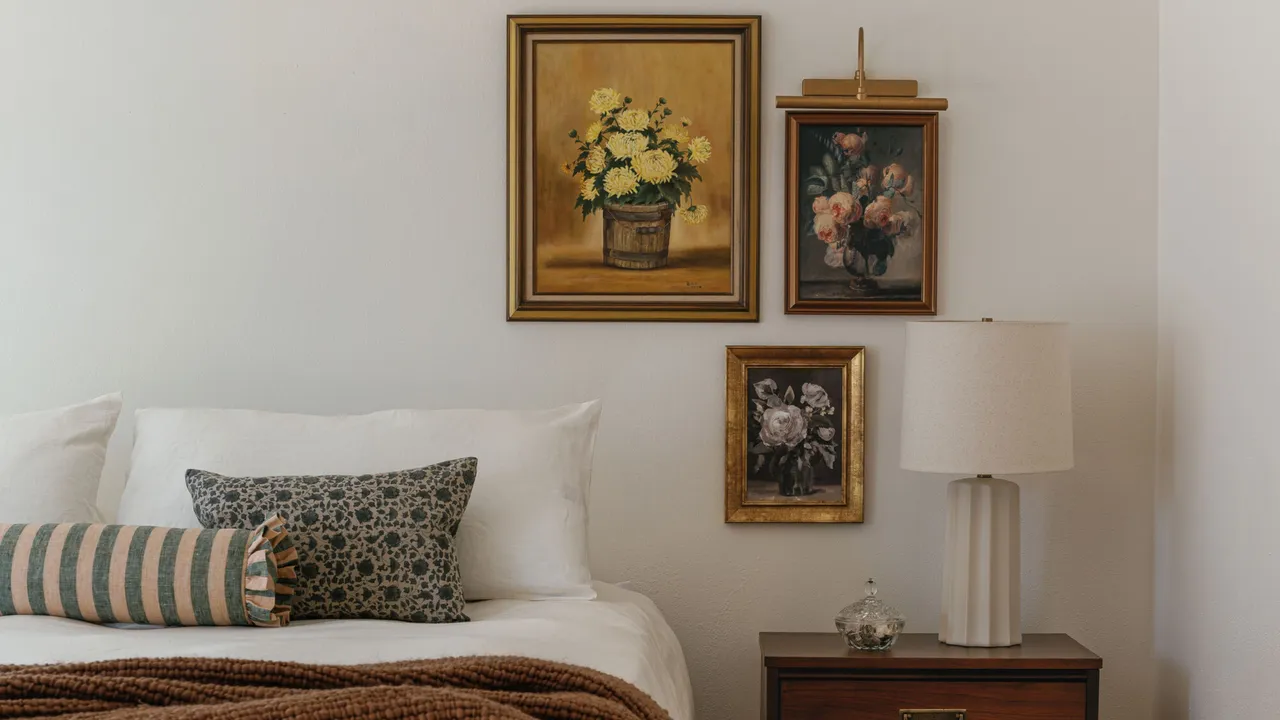Art can be one of the hardest things to get right in your home. Whether there’s not enough wall space to squeeze in all your favorite pieces, or too much, poor placement can make even the most magnificent work look awkward. And sometimes, it’s not even just where on the wall you’re hanging the art that can go wrong, but where in the home. “Harmony comes from height, proportion, and alignment that speak to the furniture and architecture around them,” explains interior designer Lauren Saab………Continue reading….
By Olivia Wolfe
Source: Livingetc
.
Critics:
“3-5-7 Rule” comes into play, which essentially means styling with odd numbers to create an asymmetric but still visually pleasing arrangement of things. Maybe you’ve heard groupings of three can be more visually pleasing to the eye and memorable than perfectly symmetric arrangements. you can absolutely design a house with AI using Planner 5D!
AI-powered tools help you create personalized floor plans, visualize interior layouts, and experiment with different styles and features—making it easier than ever to design your dream home, even without specialized skills. The HomeByMe planner will allow you to create a home office whether you’re a beginner or a professional designer. The beauty of office planning using software such as the HomeByMe planner is it can be applied to large corporate companies, as well as small home offices.
In interior design, the three foundational elements of any successful space are often referred to as the Three F’s: Floor Plan, Finishes, and Fixtures. Interior design trends for 2025 focus on warmth, personality, and a connection to nature, moving away from minimalism. Key trends include using warm, earthy color palettes like browns and deep greens, embracing textured and natural materials, and incorporating more maximalist and personalized elements through bold patterns, statement lighting, and mixed-media art displays.
Biophilic design, which brings the outdoors in, remains popular, as does the integration of smart home technology and creating multi-functional spaces for wellnessAccording to Learning Spaces: Creating Opportunities for Knowledge Creation in Academic Life by Savin-Baden, it explored the concept of space in the physical sense when describing smooth and striated cultural spaces. Smooth spaces are described as “nomadic”; that is, in a constant state of movement.
For example, the lobby of a hotel, an activity room where the seating directions are towards each other instead of focusing in one line, which provides a sense of relaxation and informality. These spaces are open, flexible, and owned by their inhabitants. Smooth spaces are where knowledge is contested and learning is co-created. They are messy and undisciplined, which often creates tension between stakeholders and users.
Striated spaces, on the other hand, are described as bounded spaces, which refers to a certain orientation that focuses primarily in one direction, reflecting the organizational and pedagogical structure of the space. Classrooms and lecture halls are examples of striated spaces. Perceived beauty and personal involvement within an environment are key factors, which determine our perception of space.
As defined in the Measurement of Meaning by Osgood, Suci and Tannebaum the factors influencing the perception of space are these 3 things: 1. Evaluation- including the aesthetic, affective and symbolic meaning of space 2. Power- the energy requirements to adapt to a space 3. Activity- links to the noise within a space and the worker’s relationship and satisfaction with job and task.
In “Effects of the self-schema on perception of space at work” by Gustave Nicolas Fischer, Cyril Tarquinio, Jacqueline C. Vischer, the study conducted linking design and psychology in the workplace. In this study, they proposed a theoretical model linking environmental perception, work satisfaction and sense of self in a feedback loop. This is shown below in Fig. 1, to illustrate their findings on the direct relationship the environment has with the inhabitant and how through psychology this affects behavior.
There is also something to be said about the way our increasingly popular open office designs may contribute to less productivity and higher distractions, versus traditional cubicle-like workspaces. According to an article from Fortune, “Evidence is mixed on whether open plans actually foster collaboration, and studies have shown that open office plans decrease productivity and employee well-being while increasing the number of sick days workers take.
A study by the architecture and design firm Gensler found that workers in 2013 spent 54 percent of their time on work requiring individual focus, up from 48 percent in 2008.” In order to combat this, future offices in our next generations will include sound-proof private rooms allowing workers to work solo without distraction, cubicle banks and private offices while continuing to sustain the open floor plan.
Color wields immense power in the psychology of interior design, influencing emotions, perceptions, and behaviors. The strategic use of color can transform spaces, evoke specific moods, and even enhance productivity. For instance, blues and greens often create calming environments, while reds and yellows can energize and stimulate creativity. Understanding the psychological impact of color allows designers to craft spaces that not only look beautiful but also support the well-being and purpose of the occupants.





Leave a Reply